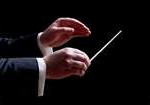A series looking at the art of the choral conductor.
 It’s important, in rehearsals, to move the choir around. Too often, voice-parts grow accustomed to hearing the same singers around them each week which, if it’s their own voice-part, can lead to a great sense of security and, sometimes, a reliance on that other singer.
It’s important, in rehearsals, to move the choir around. Too often, voice-parts grow accustomed to hearing the same singers around them each week which, if it’s their own voice-part, can lead to a great sense of security and, sometimes, a reliance on that other singer.
Moving the singers around in practice sessions means they hear a different voice-part singing next to them; breaking up the group, such that they stand in a circle but aren’t standing next to someone who is singing the same part as they are, means they suddenly don’t have the comfort-blanket of being surrounded by others singing the same line. Not only do they have to work a bit more to keep their own line, but they can suddenly hear another line next to them, and can start to hear how their line moves in relation to another. (It’s also a great way of showing singers who don’t quite know their line that they need to learn their music, without pointing fingers at individuals…!).
Socially, too, it’s a useful tool to deploy: people suddenly have to stand and sing next to others whom they might not know so well, and it’s a great way of getting them working with others.
Arranging the choir in a circle, rather than in lines, means that the sound is directed into the centre; everyone can now hear the complete sonority to which they are contributing, focusing the sound and also making them aware of balancing the parts: at particular points, one vocal line may be more important than the others, key notes in the chord colour the balance and influence the harmonic motion, and a moving line leads from one chord to the next. All these factors are significant, helping the singers understand the importance or the relevance of their contribution, and hence give meaning to their line and the way they sing it.
In our rehearsals, it’s become known as ‘Circle Time;’ a chance for everyone to get out of the rows in which they sit, to stand together and to hear a different sound. Move your singers around, and see how it affects the way they sing and the sense of ensemble the ensues: it’s sure to be different, and a positive experience.
